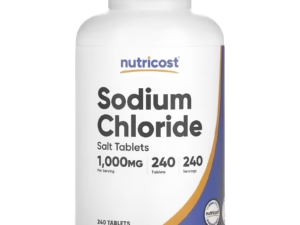Description
Potassium Hydroxide: A Versatile Compound with a Wide Range of Applications
Potassium hydroxide (KOH), also known as caustic potash, is a highly versatile inorganic compound with the chemical formula KOH. It is a white, deliquescent solid that readily absorbs moisture from the air, making it crucial to store it in airtight containers. Its strong alkalinity and potent reactivity make it invaluable in a diverse range of industrial and laboratory applications.
Properties and Characteristics:
Potassium hydroxide is a strong base and a strong electrolyte. When dissolved in water, it dissociates completely into potassium ions (K+) and hydroxide ions (OH-). This high concentration of hydroxide ions is responsible for its ability to neutralize acids and break down organic compounds. Other key properties include:
- Highly Corrosive: KOH can cause severe burns upon contact with skin, eyes, and mucous membranes.
- Hygroscopic: As mentioned, it readily absorbs moisture from the air.
- Soluble in Water, Alcohol, and Glycerol: This solubility makes it easy to incorporate into various solutions and formulations.
- Odorless: In its pure form, it has no distinct odor.
Industrial Applications:
KOH’s unique properties make it crucial across numerous industries:
- Soap Manufacturing: One of the primary uses of KOH is in the production of soft, liquid soaps. Unlike sodium hydroxide (NaOH), which is used to make hard bar soaps, KOH produces soaps with a creamy, smooth texture.
- Alkaline Batteries: Electrolyte solutions in alkaline batteries, such as those used in flashlights and radios, often contain potassium hydroxide. Its high conductivity contributes to efficient battery performance.
- Chemical Manufacturing: KOH serves as a key reagent and intermediate in the synthesis of various other chemical compounds, including potassium salts, detergents, and pharmaceuticals.
- Food Industry: It is used as a food additive for controlling pH levels, stabilizing food emulsions, and as a processing aid in the production of various food products. It can be found in the production of chocolate and in preparing cocoa products.
- Biodiesel Production: KOH can be used as a catalyst in the transesterification process to convert vegetable oils or animal fats into biodiesel.
- Etching and Cleaning: Due to its strong alkaline nature, KOH is employed in etching semiconductors and cleaning sensitive equipment and surfaces. It can also be used to remove paints and varnishes.
- Fertilizer Production: It’s a source of potassium in fertilizers, a crucial nutrient for plant growth.
Laboratory Uses:
In the laboratory, potassium hydroxide is a versatile reagent used for:
- Neutralizing Acids: Its ability to neutralize acids makes it essential in titration and other acid-base reactions.
- Saponification: As in industrial soap production, KOH is used in the lab to saponify fats and oils for various analytical purposes.
- Hydrolysis: It can be used to hydrolyze esters and other compounds.
- Preparation of Solutions: KOH is used to prepare solutions with specific pH levels for a variety of experiments.
Safety Considerations:
Due to its highly corrosive nature, handling potassium hydroxide requires extreme caution:
- Personal Protective Equipment (PPE): Always wear appropriate PPE, including gloves, eye protection (goggles or face shield), and a lab coat.
- Ventilation: Work in a well-ventilated area to avoid inhaling any fumes.
- Emergency Procedures: Know the location of safety showers and eyewash stations in case of accidental contact.
- Storage: Store KOH in tightly sealed containers in a cool, dry place, away from acids and other incompatible materials.
- First Aid: In case of skin or eye contact, immediately flush with copious amounts of water for at least 15 minutes and seek medical attention.
Conclusion:
Potassium hydroxide is a powerful and versatile compound with a wide array of applications. From soap manufacturing to chemical synthesis and laboratory research, its strong alkalinity and reactivity make it an indispensable tool. However, its corrosive nature necessitates careful handling and adherence to strict safety protocols. Understanding its properties and safe handling practices is crucial for maximizing its benefits while minimizing risks.















Reviews
There are no reviews yet.